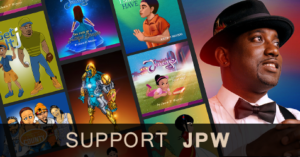

I should have is a story of a 15 year old who lives at home with his parents. His school work has slipped because he has occasionally been taking days off school to do his own thing. Some nights he gets out of his bedroom window and meets up with his older friends. When he is with them he misuses substances. He has started running away from home and spending time in the streets. He then gets convicted of crimes ranging from aggravated assault to murder. He’s now serving a life sentence. Behind bars, he recounts the crimes and the abuse he suffered as a child. The key moment comes when he reenact these soul-shattering moments with other inmates.
He finds himself in a vicious cycle, caught in a spiral of punishment and incarceration as he was harassed, profiled, watched, and disciplined at young age, even before he had committed any crimes, eventually leading many of them to fulfill the destiny expected of them. It is a story of horror and heartbreak, yet ultimately full of hope.
Children have the right to grow up in circumstances that do not put them at risk of coming into conflict with the law.
 The importance of prevention
The importance of prevention
The importance of this book is to reduce the numbers of children entering the criminal justice system. We all understand that preventing crime is better for children, their families, their communities and society as a whole.
Prevention can be seen as having three tiers:
- Focus on children who have already been victimized or in conflict with the law.
- Focus on children at the highest risk of victimization or coming into conflict with the law.
- Aim to prevent children becoming victimized or in conflict with the law before it occurs
Children at risk of coming into conflict with the law may be identified by the characteristics they share with children in conflict with the law. Children at risk can display behavior that may seem frightening, hostile or self-destructive. One helpful way to deal with it is to understand where the behavior may originate and what measures can be taken to try and address it.
Children at risk may be in situations where they:
• are on the streets or have unstable living environments;
• are associating with older, criminal peers or have family members in the criminal justice system;
• are involved in the commercial sex industry or prostitution or trafficking; or
• have experienced war, conflict or violence.
| Risk factors | Protective factors |
| • Poor parent-child relationships • Early (physical, sexual and other abuse) • Violence in the home • Low educational achievement • Gangs operating in the area • Association with delinquent peers • Substance abuse |
• Consistent parental support and supervision • No early trauma or abuse • Safe home Well-functioning school No gang networks operating • Pro-social peers • Social skills • Self-control |

Children at risk are likely to come from troubled backgrounds and to have experienced one or more form of abuse, which could include neglect, physical abuse, psychological/emotional abuse or sexual abuse or exposure to domestic violence. Therefore, it is important as a professional within the justice or welfare system to be able to identify abuse or neglect in order to address it and protect the child.
Wayoro is committed to making a difference in the lives of people through faith-inspired literature and films. As an author, Wayoro’s goal is to create faith-based projects that share about faith, are engaging, funny, and inspirational for children of all ages.










